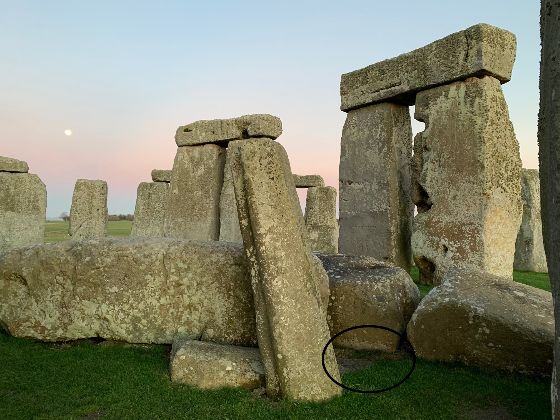
By Olivia Henry, the Australian Science Media Centre
The iconic Stonehenge’s six-tonne Altar Stone may have been sourced all the way from Scotland, over 700km away, according to Australian researchers, who say their analysis challenges a long-held theory that the stone came from Wales.
PhD student Anthony Clarke from Curtin University, who led the study, said the findings change archaeologists’ understanding of Stonehenge’s cultural significance.
“Looking at Stonehenge now, it seems to contain a carefully curated selection of rocks from the local area in England, from Wales and all the way from North East Scotland, including Orkney,” he said.
For some archaeologists, during the time Stonehenge was built, the area of Orkney was a hive of activity and a hub of trade, farming, and construction. The new analysis indicates the collection of stones may be further evidence of a connection between the different groups of people.
Study co-author Professor Chris Kirkland from Curtin University told the AusSMC: “The use of this technique really has opened up quite a lot more insight into the society and connectivity of prehistoric Britain, and we're quite excited to share this story to the public.”
“It’s fascinating,” Mr Clarke added.
But how did the stone travel 700 to 800 kilometres to get to Stonehenge?
Experts initially thought the six-tonne stone was moved across ice. But looking at ice flow directions during previous ice ages, Mr Clarke said ice was actually moving further away from southern Britain, carrying material northwards and moving objects further away from Stonehenge.
Land was not an option either, as the stone would’ve had to pass formidable barriers including rivers, thick forests, bogs, and mountains to get to its new home.
The new theory is a marine transport route – which Mr Clarke says is consistent with what we already know about the people of the time.
“[Evidence] showed there was an extensive network of Neolithic shipping during prehistoric times,” Mr Clarke said.
“We see pottery and amber and stones that have been transported from all over Europe, in and around northern Scotland. So the Altar Stone, around four to three thousand years ago, was transported from the Orcadian Basin to Stonehenge and erected at the centre of the monument.”
To figure out where the rock came from, the team analysed tiny historical samples that they said they were lucky to even access.
“It’s almost easier to get lunar samples than samples from the Altar Stone,” Mr Clarke said.
Using these rare and valuable samples that are only the width of a human hair, the team analysed the mineral grains, and were not only able to match the fragments with rocks from northeast Scotland, but could also clearly differentiate them from Welsh bedrock.
Professor Kirkland said that as a sandstone, the Altar Stone is made up of lots of little crystals which contain small amounts of uranium, which turns to lead over millions of years.
“We know the rate of change of uranium to lead. So by measuring the isotopic ratios of uranium and lead within these little crystals, we have miniature clocks,” he said.
“These clocks are very handy because they tell us about the original age of the material that was eroded to produce our sandstone,” he added.
The team compared the findings from their analyses to a large database of other rocks around the UK to pinpoint the Stone’s origin to northeast Scotland.
Professor Kirkland added these analyses were undertaken in Australia due to the technologies used in our mining industry.
“These sorts of techniques are well developed, actually, in Australia, because they're also used for provenancing and understanding mineral deposits.”
But why would ancient people drag this rock all the way from Scotland to the southwest of England?
Mr Clarke said he wasn’t really sure why this stone in particular was chosen for such a prominent position at the iconic landmark.
“I think even today in our society, we value stones. Stones are important to us. But if you look at the Altar stone, it's kind of a rather ordinary looking piece of sandstone. You really wouldn't give it much attention,” he said.
“It's not, you know, this beautiful blue stone, like the other pillars there at Stonehenge, or the large, upright sarsen, so it could be easily missed.”
But Mr Clarke said maybe ancient people, like us, just liked the rock.
“I suppose it's the same thinking of why millionaires adorn their mansions with Calacatta lime marble from Italy. To me, I don't understand it.”
“Perhaps the average Neolithic Britain felt the same way about the construction of Stonehenge, why this particular rock? That's the open question.”
This article originally appeared in Science Deadline, a weekly newsletter from the AusSMC. You are free to republish this story, in full, with appropriate credit.
Contact: Olivia Henry
Phone: +61 8 7120 8666
Email: info@smc.org.au